Sergeant Stanley Hawken
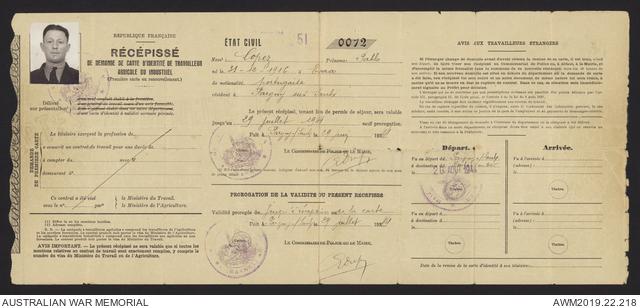
A Traveller Identity Certificate belonging to Stanley Hawken, AWM2019.22.218
Sergeant Stanley Hawken enlisted as an aircraftman in the Royal Australian Air Force. In 1943 he qualified as a wireless operator and air gunner before sailing to the United Kingdom, where he was attached to the Royal Air Force and served in Bomber Command.
On the night of 18 July 1944 Stanley and his crew entered the air over Nazi-occupied France, where they were met by heavy fire from enemy fighters. Stanley received a radio message requesting that they delay bombing for five minutes, but as they circled the target the aircraft was struck by machine-gun fire, and the two engines burst into flames. The pilot gave the order for the crew to bail out.
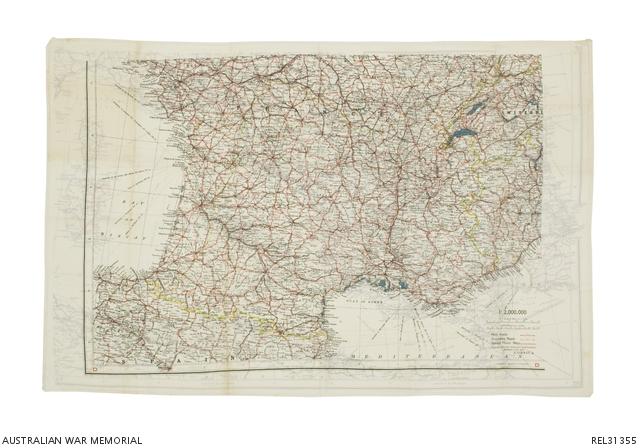
An MI9 escape and evasion map belonging to Flight Sergeant Stanley Hawken, Royal Australian Air Force, c. 1940–42, AWM REL31355
Stanley parachuted from the rear escape hatch, landing in a small forest. After getting his bearings, he came across a farmhouse near the village of Saint Vrain. He cautiously approached the occupants for assistance, and they fetched the leader of the local resistance, Jean Vidal.
Stanley was taken to Jean’s home, where he remained hidden for several weeks. When German troops moved into the village, he joined a group of resistance fighters who had set up a camp several kilometres away. He later met two American airmen who had also been shot down. He left the resistance and waited with the Americans, hoping Allied help would soon arrive.
On 2 September the nearby village of Cheminon was liberated from the German forces, and Stanley was able to travel to Paris and on to England. He returned to Australia in January 1945.
Read more about Stanley Hawken
Activities
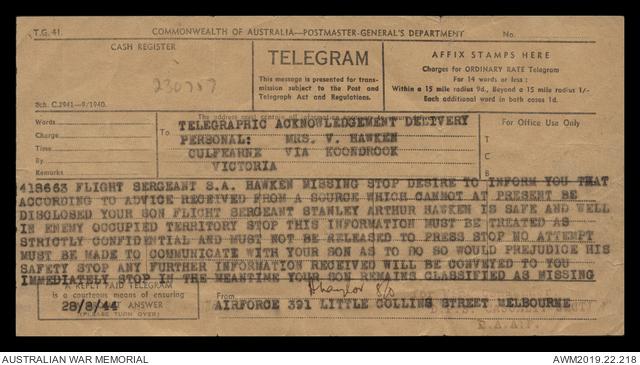
Telegram sent to Stanley’s mother stating Stanley was safe and well in enemy occupied territory, AWM2019.22.218
- How do you think Stanley’s mother felt reading that her son was alive after he had been classified as missing?
- Why do you think it was critical that Stanley’s mother not disclose her son was still alive?
- Escape maps were often turned into items such as blouses and lampshades after the war. Why might these items have been created? How might servicemen and servicewomen have felt seeing these items around the house?
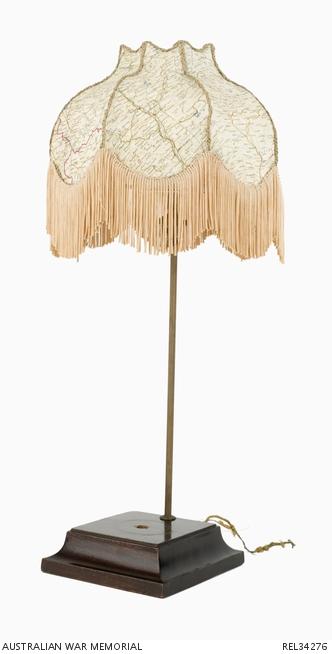
Mrs A.K. Blundell made this lampshade from an MI9 escape and evasion map after the war. The map was given to her by her son, who had served with the Royal Air Force. She brought the lamp with her to Australia when the family emigrated from England in 1951. AWM REL34276
-
This escape compass was made in 1942 by Lieutenant Archibald Walker, 2/1st Australian Machine Gun Battalion, while he was a German prisoner of war. What might have been the advantages and disadvantages of having an escape kit in a prisoner-of-war camp?
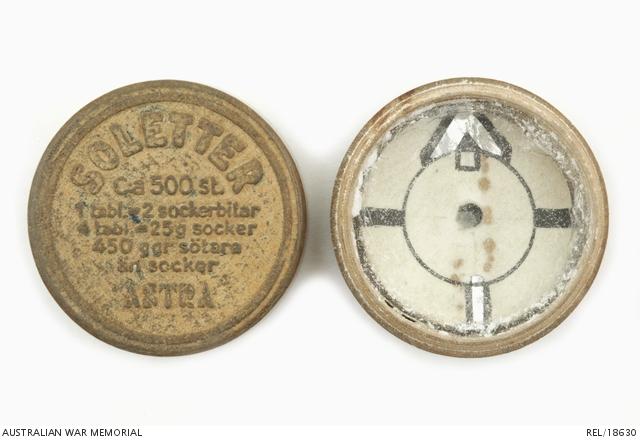
Lieutenant Archibald Walker’s handmade escape compass, AWM REL/18630